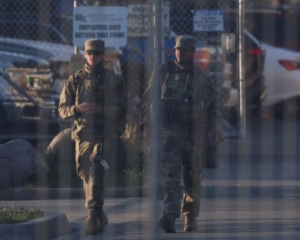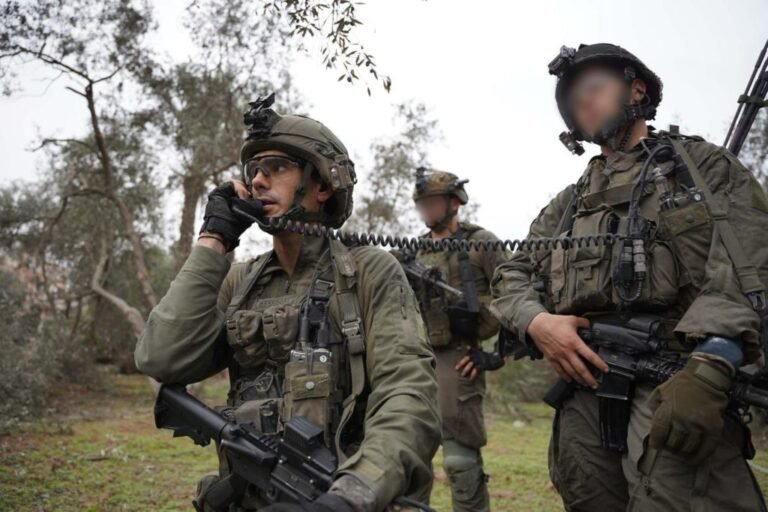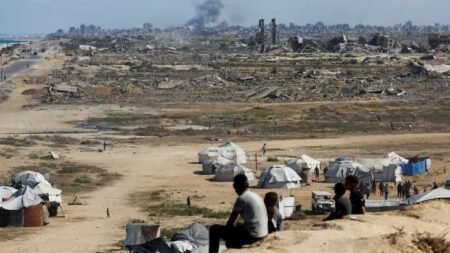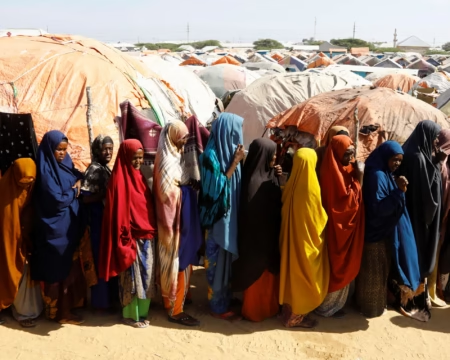Palestinian resistance fighters launched a well-coordinated attack against Israeli troops in the eastern part of Khan Younis, southern Gaza. The operation involved three different military groups and left Israeli forces in a difficult position. These fighters continue to resist Israeli advances in a city that has become a symbol of Palestinian defiance.
The attack was carried out by the Al-Quds Brigades, the armed wing of Islamic Jihad. According to their statement, they targeted a unit of Israeli ground forces hiding inside a house. Israeli soldiers believed the building was safe. But it had been rigged with powerful explosives in advance.
Using anti-personnel and anti-fortification bombs, the Al-Quds Brigades detonated the traps. The blast tore through the building, destroying the Israeli position in seconds. The explosion also alerted other Israeli units nearby, who rushed to assist. But they too came under heavy fire from the fighters.
The Palestinian group opened fire with heavy machine guns and rocket-propelled grenades. Israeli relief forces were hit directly. As casualties mounted, Israeli helicopters were sent in to evacuate the wounded. Thick smoke was dropped from the sky to cover the retreat. Artillery fire also intensified from the air. However, the resistance fighters did not stop their assault.
In the same area, Al-Quds Brigades destroyed a D9 armored bulldozer. They used a powerful barrel bomb in the Al-Kabeera neighborhood to carry out this attack. The explosion completely burned the bulldozer. At the same time, a joint strike was launched by Al-Quds Brigades and the Al-Qassam Brigades, the military wing of Hamas.
This joint attack focused on an Israeli Merkava tank in eastern Khan Younis. They used a strong explosive called the Hakibo site bomb. The tank was severely damaged. The fighters claimed that even Israeli communication systems were affected by the blast.
After these operations, Al-Quds Brigades issued a statement on Telegram. They said their fighters had returned safely to base. The group also confirmed that the operations were successful and carefully planned.
Meanwhile, a new group joined the fight. The Martyr Omar Al-Qassem Forces, the military wing of the Democratic Front for the Liberation of Palestine (DFLP), claimed responsibility for another attack. They said they targeted an Israeli armored vehicle in the Abasan Al-Jadida area.
These attacks are not isolated events. Instead, they are part of a larger, organized resistance strategy. Palestinian groups are continuing to resist the Israeli military through coordinated actions across the region. They are recording each moment of the battle and sharing updates to show their actions and gain support.
The resistance is not limited to ground attacks. Palestinian forces have also launched medium- and long-range rockets toward Israeli towns and settlements. This has caused renewed concern among Israeli officials, as it poses a wider threat.
There is also growing debate inside Israel about the number of soldiers being killed in Gaza. According to the Israeli military’s own radio station, at least 30 soldiers have died in Gaza since March. These losses have added to public pressure and growing political tension within the country.
Gaza resistance forces are not just relying on weapons. They are using tactics, local knowledge, and planning to strike at Israeli troops with maximum impact. The city of Khan Younis has now become a center of active military confrontation, as Palestinian fighters continue to resist with determination.
This latest phase of fighting shows that the Palestinian resistance is evolving. With more groups joining forces and using modern strategies, the situation in Gaza remains intense and highly unpredictable.







